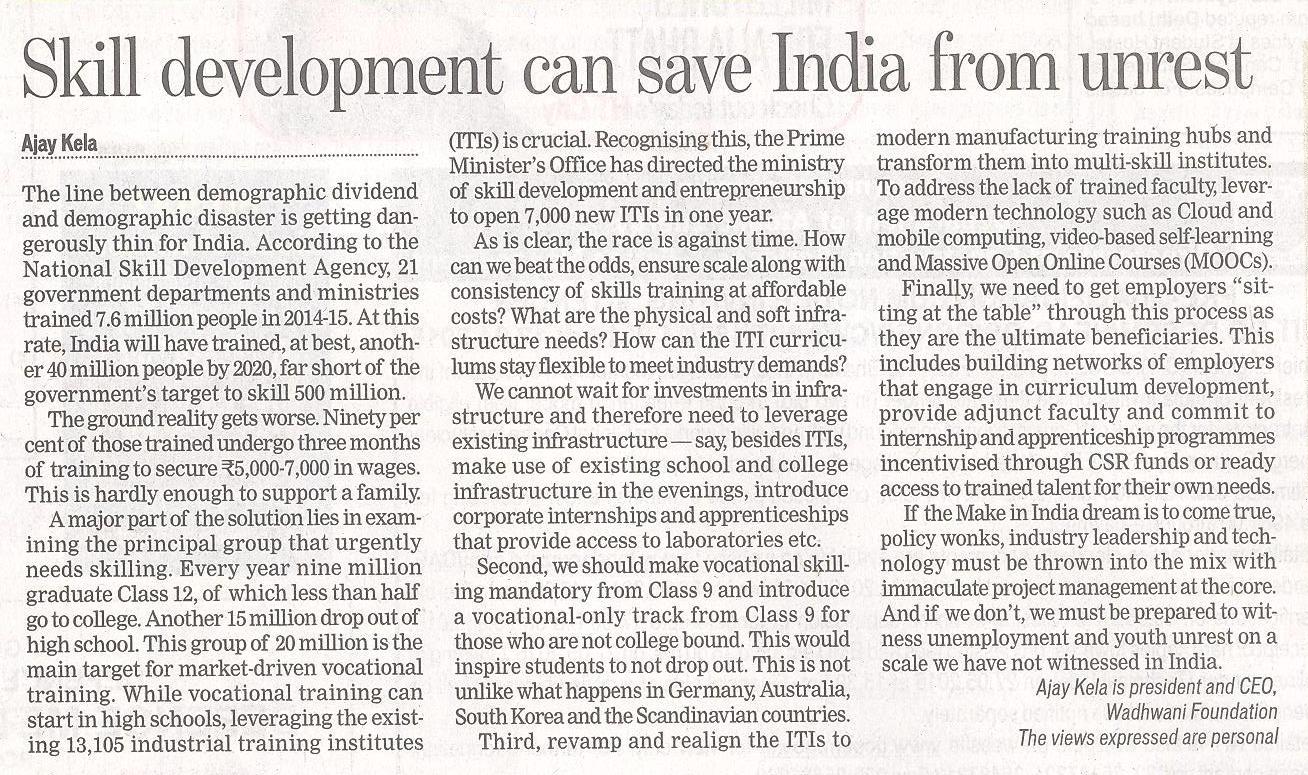The line between demographic dividend and demographic disaster is getting dangerously thin for India. According to the National Skill Development Agency, 21 government departments and ministries trained 7.6 million people in 2014-15. At this rate, India will have trained, at best, another 40 million people by 2020, far short of the government’s target to skill 500 million.
The ground reality gets worse. Ninety percent of those trained undergo three months of short-term training to secure Rs 5,000-7,000 in wages. This is hardly enough to support a family.
A major part of the solution lies in examining the principal group that urgently needs skilling. Every year nine million graduate 12th class, of which less than half go to college. Another 15 million drop out of high school. This group of 20 million is the main target for market-driven vocational training. While vocational training can start in high-schools, leveraging the existing 13,105 industrial training institutes (ITIs) is crucial. Recognising this, the Prime Minister’s Office has directed the ministry of skill development and entrepreneurship to open 7,000 new ITIs in one year.
As is clear, the race is against time. How can we beat the odds, ensure scale along with consistency of skills training at affordable costs? What is the physical and soft infrastructure needs? How can the ITI curriculums stay flexible to meet industry demands?
We cannot wait for investments in infrastructure and therefore need to leverage existing infrastructure—say, besides ITIs, make use of existing school and college infrastructure in the evenings, introduce corporate internships and apprenticeships that provide access to laboratory infrastructure etc.
Second, we should make vocational skilling mandatory from Class IX and introduce a vocational-only track from Class XI for those who are not college bound. This would inspire students to not drop out of schools. This is not unlike what happens in Germany, Australia, South Korea and Scandinavian countries.
Third, revamp and realign the ITIs to modern manufacturing training hubs and transform them to multi-skill institutes. To address the lack of trained faculty, leverage modern technology such as Cloud and mobile computing, video-based self-learning and Massively Open Online Courses (MOOCs).
Finally, we need to get employers “sitting at the table” through this process as they are the ultimate beneficiaries. This includes building networks of employers that engage in curriculum development, provide adjunct faculty, and commit to internship and apprenticeship programs incentivised through CSR funds or ready access to trained talent for their own needs.
If the Make in India dream is to come true, policy wonks, industry leadership and technology must be thrown into the mix with immaculate project management at the core. And if we don’t, we must be prepared to witness unemployment and youth unrest on a scale we have not witnessed in India.





